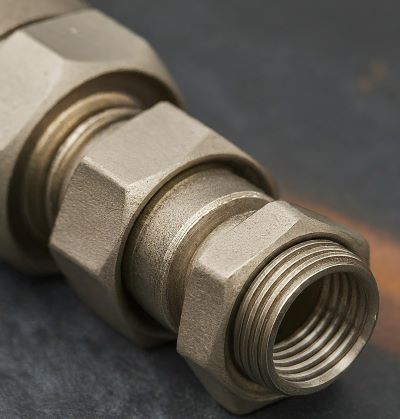Pushlock fittings have become increasingly popular for plumbing and pneumatic applications thanks to their ease of use and versatility. No more wrestling with wrenches or battling stubborn threads! But for a truly secure and leak-free connection, there’s more to it than just pushing a hose in.
Let’s delve into the world of pushlock fittings and explore some tips and tricks to make your project a breeze.
Understanding Pushlock Fittings
A. Components of a Pushlock Fitting:
These handy connectors consist of three main parts:
➡️ Body: The main housing of the fitting, usually made of plastic or metal.
➡️ Gripping Mechanism (Barbs): These are the spiny protrusions inside the fitting that grip the hose for a secure connection.
➡️ Release Collar: A ring or sleeve on the fitting that allows for easy hose removal.
Pushlock fittings come in various sizes to match different hose diameters, and you’ll find options in materials like nylon, polypropylene, and even brass for higher-pressure applications.
B. How Pushlock Fittings Work:
Using a pushlock fitting is as simple as it sounds. Here’s the basic process:
➡️ Push the Hose: With the release collar pushed back, insert the hose end firmly and squarely onto the barb.
➡️ Hear the Click: As the hose slides onto the barb, you’ll hear a satisfying click. This indicates a secure connection with the gripping mechanism.
The barbs create a tight seal around the hose, preventing leaks. Some fittings also have an o-ring for additional sealing power.
Tips for Easy and Secure Pushlock Fitting Use
Now that you understand the basics, let’s ensure your connections are secure and reliable:
A. Selecting the Right Fitting:
1. Size Matters: This might seem obvious, but ensure the fitting size perfectly matches your hose diameter. Leakage may occur from a loose fit.
2. Pressure and Temperature: Consider the pressure rating and temperature range of the fitting to ensure it can handle your application.
B. Hose Preparation:
1. Clean Cut: For a proper fit, make sure the hose end is clean and has a square cut. A dull razor blade works well for this.
2. Deburring (Optional): If the hose end has any sharp edges (burrs) from cutting, use a deburring tool to smooth them out. This prevents them from damaging the fitting’s seal.
C. Making the Connection:
1. Hold Firm: Hold the hose firmly and ensure it’s straight.
2. Push to Click: Push the hose onto the barb with a steady motion until you hear a distinct click. This confirms a secure connection.
D. Double-Checking the Connection:
1. Visual Inspection: Give the connection a good look to ensure the hose is fully inserted and aligned correctly.
2. Tug Test: Gently tug on the hose to verify it’s secure and won’t come loose under pressure.
Advanced Tips and Tricks
A. Using Lubrication (Optional):
In some cases, using a small amount of water-based lubricant on the hose end can make insertion easier. However, be very cautious! In fact, an excess of lubricant can weaken the seal. Use sparingly, and only if necessary.
B. Disconnecting a Pushlock Fitting:
When it’s time to disconnect the hose, locate the release collar. Push it in and hold it while pulling the hose straight out. The fitting should release the hose easily. Avoid using tools to pry the hose off, as this can damage the fitting.
When NOT to Use Pushlock Fittings
While pushlock fittings are incredibly convenient, they might not be suitable for every situation. Here are several limitations to be mindful of:
1. High-Pressure Applications: For systems with very high pressure, other types of fittings, like crimped or welded connections, might be a safer choice.
2. Extreme Temperatures: Check the temperature rating of the fitting. Some may not be suitable for very hot or cold environments.
If you’re unsure whether pushlock fittings are appropriate for your project, consult with a professional for guidance.
Read these resources to deepen your knowledge on hydraulic fittings ⬇️⬇️⬇️
➡️ High-Pressure Quick Connect Fittings: Best Practices
➡️ Quick Guide To Braided Hose Fittings
Conclusion
Pushlock fittings offer a quick and easy way to create secure connections for various plumbing and pneumatic applications. By following these tips and understanding their limitations, you can ensure reliable and leak-free connections in your next project.
So, ditch the wrenches, embrace the click, and enjoy the convenience of pushlock fittings!
Post time: Jul-12-2024


